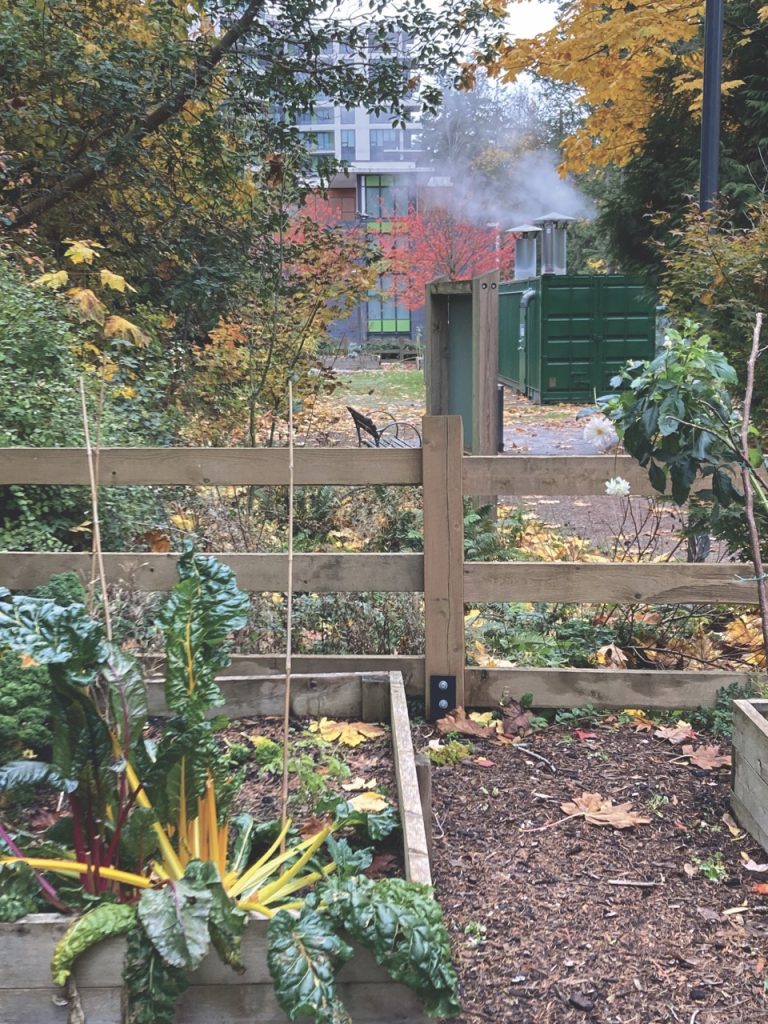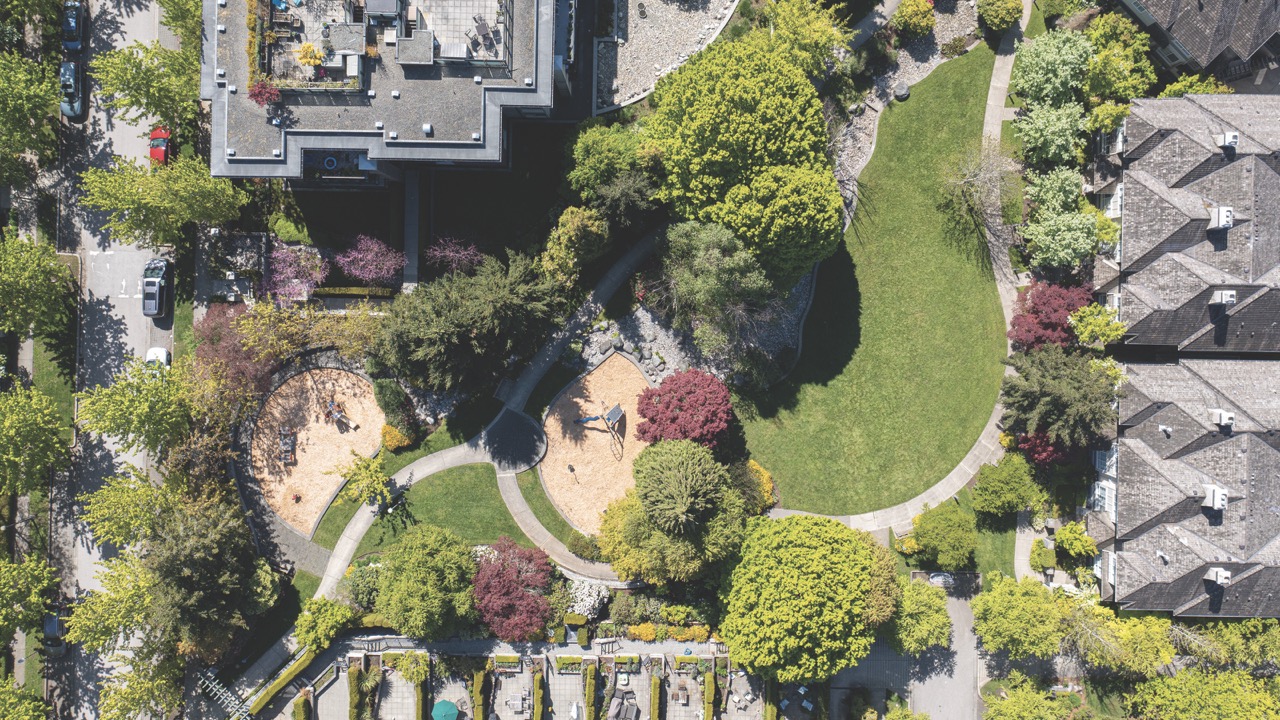The Board of Governors has approved the university’s Neighbourhood Climate Action Plan, endorsing proposals aimed to reduce carbon emissions from its residential neighbourhoods to net zero by 2050.
The plan, approved in June, outlines a mix of regulations, incentives and education intended to reduce the carbon impacts of construction, waste management, transportation, and building heating and cooling.
It also includes provisions for adapting to climate change, including the increased risks of heat and wildfires and greater variability in precipitation.
Several initiatives are already underway. The Wesbrook neighbourhood has had a district energy system providing heat and hot water to new buildings since 2015. The system now uses natural gas, but the plan calls for switching the system to an unspecified low-carbon energy source by 2030.
Under the plan, new developments in Wesbrook and the future Stadium and Acadia neighbourhoods would have to use district energy or some other low-carbon energy source. The plan also strengthens energy efficiency requirements for new buildings, anticipating stricter provincial rules that take force in 2032.
For existing buildings in the Hampton, Hawthorn, and Chancellor neighbourhoods that are not connected to a district energy system, the action plan proposes working with the UNA to encourage low-carbon retrofits such as heat pumps.
Isabel Todorova, the UNA’s sustainability specialist, says the UNA will have a role in sharing “information about building retrofits and external retrofit incentives (such as those from BC Hydro and the provincial government) with stratas and building owners.” UBC would also support pilot projects in UBC-owned buildings to demonstrate the feasibility of low-carbon technologies.
It’s unclear if the net zero targets can be reached without external funding. But acknowledging the considerable costs of retrofits, the plan calls for efforts to obtain financial support from the provincial government for decarbonization projects and unspecified financial incentives for stratas and homeowners.
The plan also provides more information on other initiatives, such as emergency preparedness. “The UNA will be partnering with UBC on a variety of projects related to climate emergency preparedness,” Todorova says, including “developing a localized emergency response plan for local wildfire events and exploring opportunities to increase grants, supplies, and equipment for social connectedness activities.”
The UNA has already begun implementing other elements in the plan’s climate adaptation agenda. Todorova notes that these include “projects to increase community resilience during extreme heat events” such as establishing structures to provide shade, misting stations, and adding water fountains.
The plan calls for reductions in household and construction waste by reducing consumption and diverting waste through recycling and reuse. It supports the expansion of the UNA’s successful Green Depot for reusing and recycling clothing, household goods, and packaging.
The plan singles out UNA community yard sales for encouraging reuse of household goods, and it proposes tool shares and repair workshops that would reduce unnecessary purchases. Acknowledging that neighbourhood recycling and organic waste collection have been a mixed success, the plan calls for expanding education and recycling infrastructure at the strata and neighbourhood levels.
Like many of the ambitious goals outlined in the plan, waste reduction and diversion will require considerable study, planning, and investment. While the plan’s documentation catalogues over 100 measures to reduce carbon emissions, it provides few details on how they would be achieved, and, more importantly, who will pay for them.
Reducing embodied carbon in new construction is a case-in-point. The City of Vancouver has incentivized low-carbon projects by relaxing height restrictions on mass timber buildings—allowing developers to offset the higher initial costs of construction by adding two to three storeys to their buildings.
The plan sets an ambitious target to reduce embodied carbon in new buildings by 40 per cent by 2030. But it introduces no requirements or incentives for achieving the target, instead outlining an initial phase to study, track, and account for embodied carbon before proposing specific policies.

The plan itself does not itself create programs or regulations. Instead, it provides a guide for revisions to UBC development regulations, most notably the Residential Environmental Assessment Program. It also will inform future neighbourhood plans, UNA operations, transportation planning, and, in the longer term, strata decisions on renewal and replacement of existing heating and cooling systems.
Residents will have an opportunity to help shape some of these changes—in particular on green space, transportation infrastructure, and emergency planning—as UBC revises the Wesbrook Neighbourhood Plan in the coming months.
Beyond that, neighbourhood residents should be able to track UBC’s ongoing decarbonization efforts. The plan calls for tracking embodied carbon, energy usage, transportation patterns, tree canopy cover, and waste flows. Accountability is crucial to the success of any climate action plan.
EAGLE GLASSHEIM IS A PROFESSOR OF HISTORY AT UBC AND A UNA DIRECTOR. HE CHAIRS THE UNA’S LAND USE ADVISORY AND NEWSPAPER EDITORIAL COMMITTEES.
